Maximum Velocity: Facing the ATP's fastest serves head-on

HOUSTON – John Isner lopes through the red clay and positions his 6’10” frame at the baseline to serve into the ad court. He bounces a ball three times off his racket against the court and catches it. He reaches his exceptionally long left arm around his back and subtly flicks his wrist to toss the ball down and forward through his lanky legs in the style of a behind-the-back-and-through-the-legs dribble. The ball bounces between his feet, just forward of his size 15 shoes. He taps it with his racket for another bounce on the court and catches it. He does the behind-the-back-and-through-the legs bounce again, a move he’s been doing since he played basketball in his teens. He normally does it only once before each serve, but this is set point, 6–5 in the first set tiebreaker against world No. 71 ranked Hyeon Chung of South Korea in the quarters of the U.S. Men’s Clay Court Championships. A second bounce helps to give him more focus.
He leans forward, bending over at the waist, and bounces the ball with his hand five more times on the court, also more than usual, before he holds the ball against his strings. He looks toward Chung and raises his left arm above his head and tosses the ball up. He bends his knees before uncoiling as he winds the racket behind his head and down his back and then up in a force that straightens out his long body and propels him off the ground, striking the ball from a height of about 12 feet in the air. The ball rockets over the net and down toward the side corner of the service box to Chung who sails a backhand long. The scoreboard marks the set for Isner and the digital sign opposite reports the serve’s speed in miles per hour: 141.
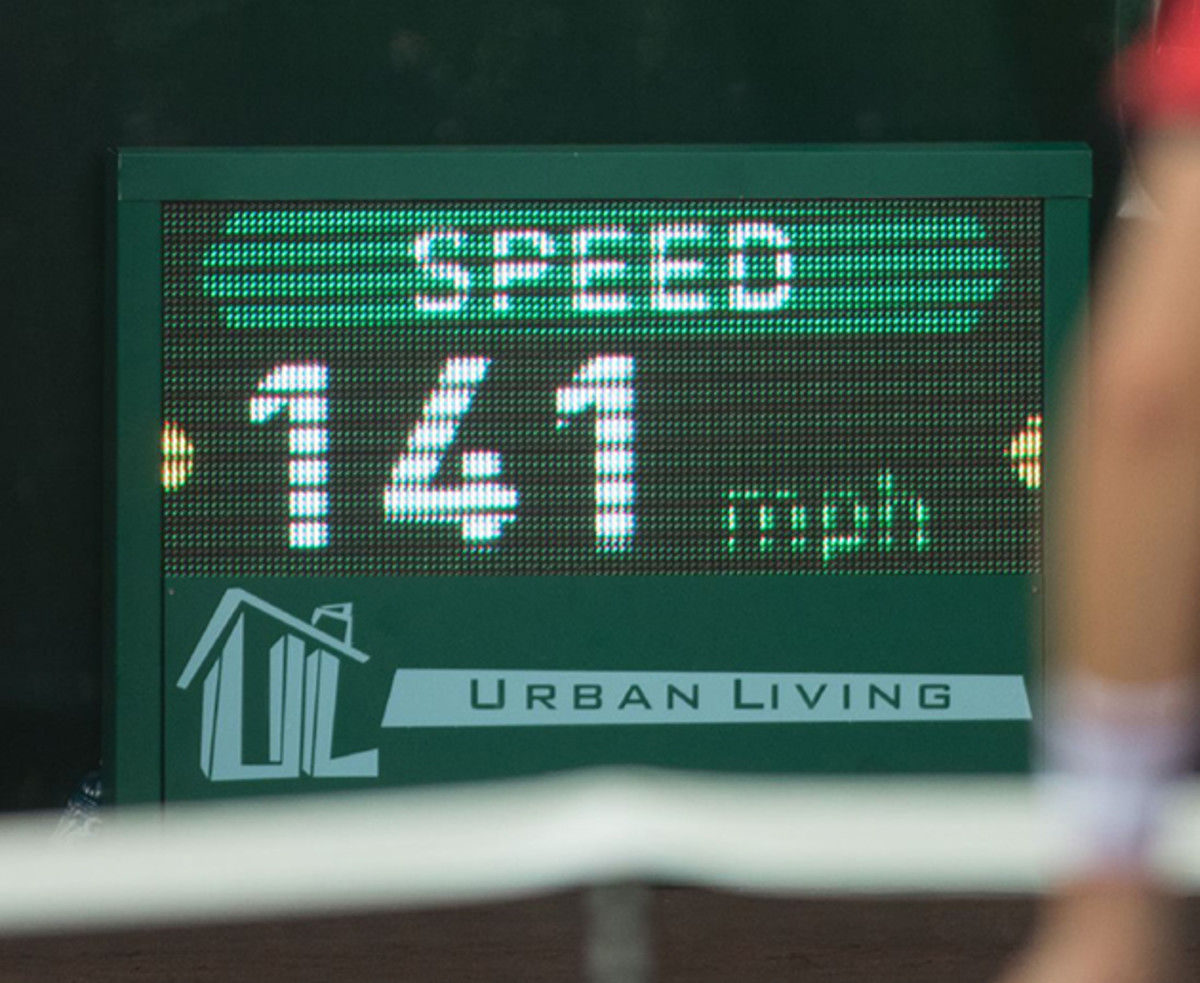
Even though the serve traveled the 78 feet from baseline to baseline in slightly more than one-third of a second, a full 41 miles an hour faster than Houstonian MLB hero Nolan Ryan used to throw fastballs, the serve by Isner is not at a rare velocity. Isner is a perennial top 20 player ranked 15th in the world coming into this tournament, an ATP 250 event at River Oaks Country Club, where the neatly-pressed male patrons sometimes wear plaid or seersucker jackets and the women can appear in hats worthy of the Kentucky Derby.
In total, eight of the 28 players in the singles draw hit serves clocked at 139.6 miles per hour or higher during the tournament. Isner’s fastest serve of the week in Houston (146.8 mph) is a full ten miles an hour slower than the all-time record serve he hit earlier this year during a Davis Cup match in Australia, a 157-mph bomb.
This is the world of men’s tennis, where the fastest serve speeds are rising and the median speed of serves hit by most players on the men’s tour is skyrocketing.
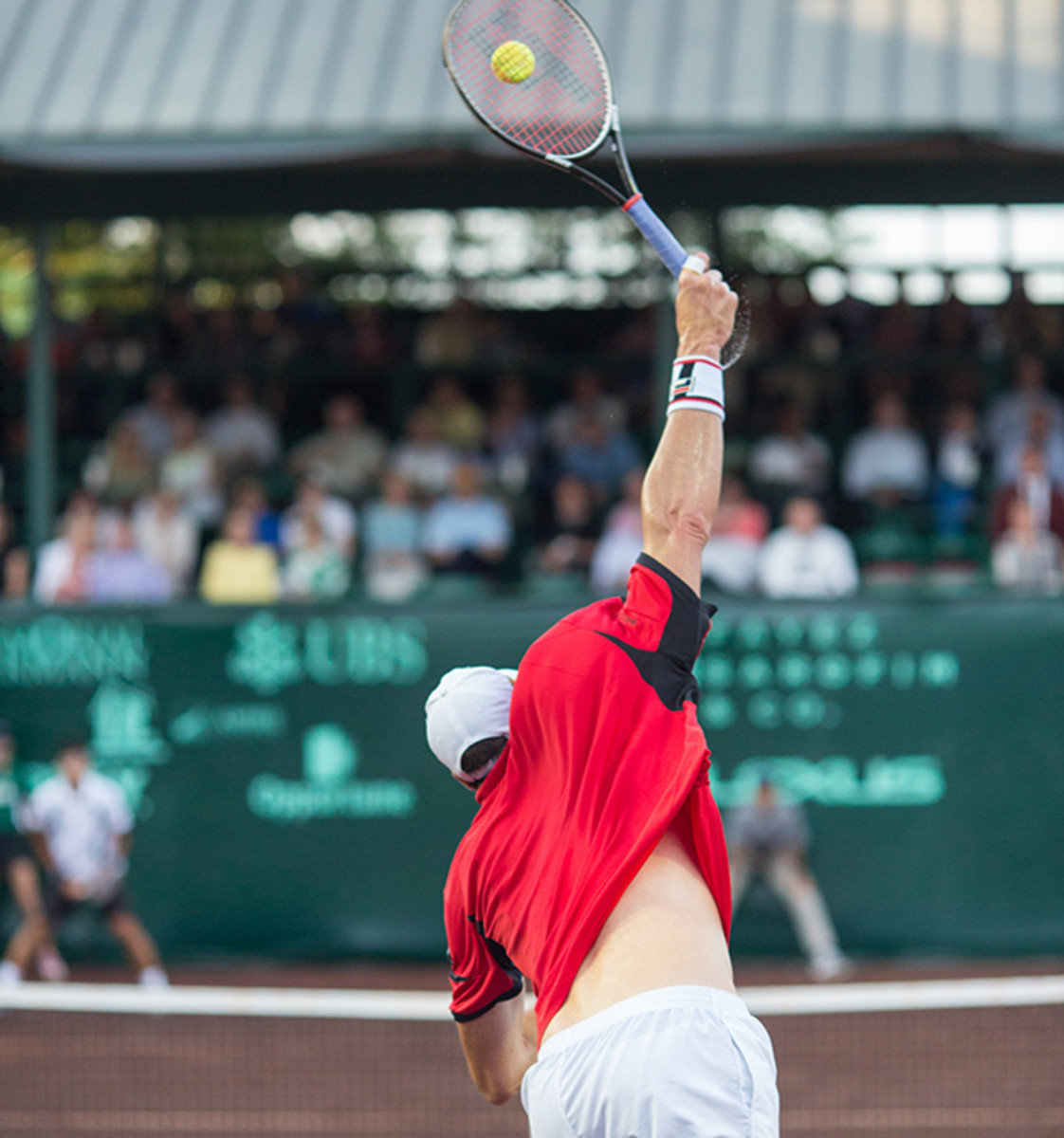
“What has really gone up is the number of players who hit big serves,” said Leo Levin, director of sports analytics at SMT, a Jacksonville, Fla., company that runs the speed radar for many ATP tournaments. “Almost everyone hits in the 120s. Most are in the 130s. And a handful hit in the 140s.”
Sam Querrey, a 10-year veteran of the tour who hit a serve of 143 mph in Houston last week, has witnessed the trend of escalating serves from the returner’s viewpoint. “It’s not even the tall guys,” says Querrey, who stands 6’6. “Even the guy that is 5’11” these days can serve 130.”
I ask Querrey if he ever worries about getting hit while returning serve, being that a hollow core rubber ball covered in slightly fuzzy yellow threads traveling more than 140 mph could be a lethal projectile. “Not on a serve,” he says. “You can read it. As a pro, you see it consistently enough that you can react. If you get hit, you’re just a schmuck.”
****
About two hours after talking to Querrey, I’m living my George Plimpton moment. I’m across the net on one of the practice courts preparing to return serves from Reilly Opelka, the 18-year-old Michigan native who made his ATP debut in Houston last week. Last year’s Wimbledon junior champion, he stands one inch taller than Isner. Querrey, who beat Opelka in two close sets in the first round, told me that Opelka consistently serves harder than Isner, although not nearly with as much accuracy.
I don’t find that comforting.
I bounce around on my toes in the red dirt. I’m a 49-year-old 4.5-USTA rated player whose best year of tennis was 1985—the year Isner was born and twelve years before Opelka came into the world—when I won my Northwest Georgia region singles high school championship. I played many junior tournaments and still play at least once or twice a week and sometimes in leagues and tournaments, but I didn’t play college tennis and I am not (and never was anywhere close to being) a pro. I attended the Nick Bollettieri Tennis Academy for a few weeks over Christmas break in 1981, but I’m sure no one there remembers my mediocre game. I thought much about pro tennis while writing a novel about a fictional player, but the closest I’ve been to a real professional tennis player on court is six years ago when I lost to a 5’3”, 15-year-old girl ranked No. 920 in the WTA rankings.
I just might be the schmuck who gets hit.
Opelka stands on the baseline across from me and bounces the ball. When he stands beneath a basketball hoop and reaches up, his fingers are only four inches short of the rim. It seems as if he is about 10 feet away, not 78. I back up several feet behind the baseline.
I have not had a chance to warm up. I’ve been awake since 4:15 a.m. and I am only about four hours off the plane. Opelka has been warming up with his doubles partner Tommy Paul, last year’s French Open junior champion. The temperature is in the high 80s and the court is pretty dry and hard beneath my feet—prime conditions for a big server. I stretch a little and bounce on my toes to get ready.
He begins his motion but then he pauses, and asks, “Do you want me to tell you where I’m going with it?”
Beyond the Baseline Podcast: Andy Roddick on fatherhood, more
Bravado subverts good sense. “No,” I say. “I want to see the real thing.” And I do—I want to experience what it’s like to try to return one of the fastest serves in the game—I just hope he doesn’t serve right at me. I consulted several friends who are teaching pros beforehand for advice. “Wear a cup,” said Bobby Dowlen, a longtime Houston teaching pro, “and sit in the stands.”
But I’m not wearing a cup, nor did I strap on a catcher’s mask as I briefly considered. I bend my knees much more than I usually do and I crouch much lower than normal. I know from his trajectory that the ball will bounce up high on this clay court and hopefully go over my head. I think I can get the racket in front of my face in time, although I worry it could press the strings back into my nose. I also consider falling to the ground to save myself.
He tosses the ball and begins his motion. I try to concentrate on where it’s going. He pounds a serve toward the T, but it hits the net cord and pops up a few feet and falls into the service box at a slow pace.
I hit an easy forehand to him. “I got one back!” I say. I don’t think he finds it funny.
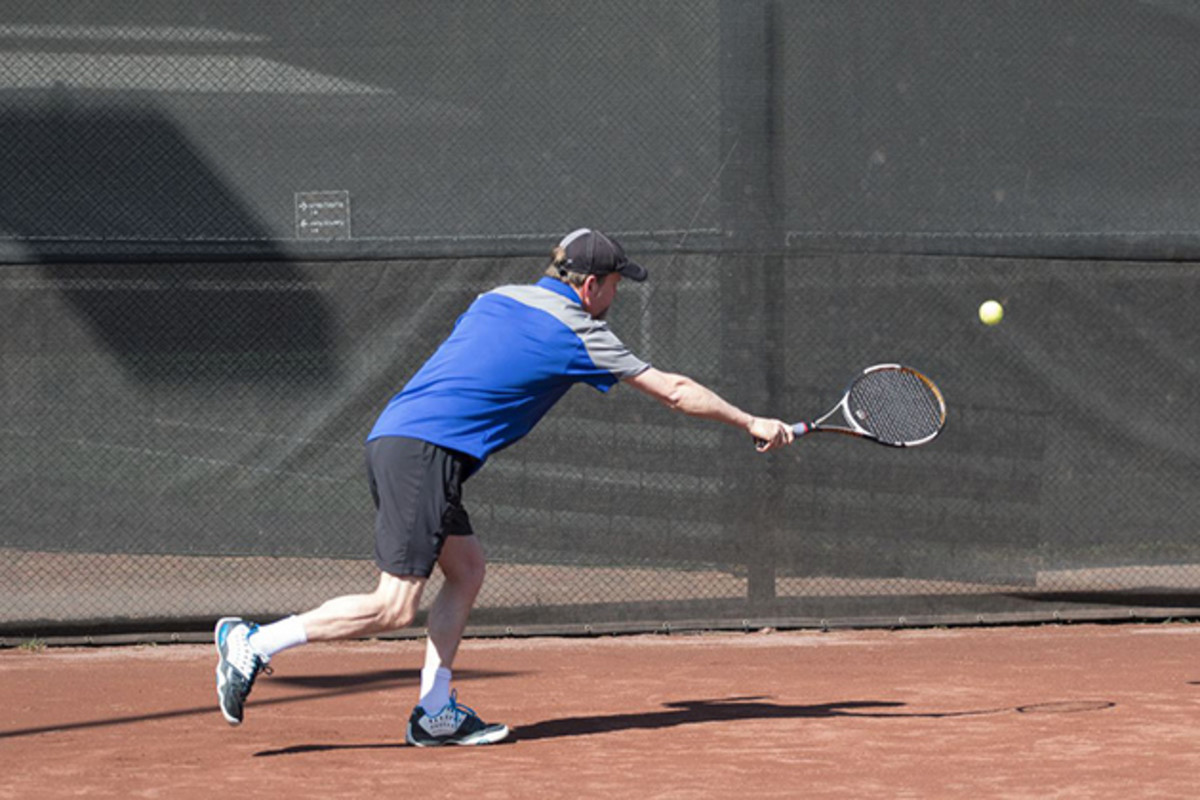
He pops a few serves down the T that are long. I lunge at them, the ball flying past me before I have much time to react. On one ball, I guess he’s going down the T and I deflect it off my frame. It feels as if I was trying to stop a shot put fired from a cannon. The ball flares into the side fence and a little behind me. “I touched it!” I say, and this feels like a small victory, as though I hit a winner in a 6-0, 6-0 defeat.
I don’t come anywhere near to touching the next two serves. I feel as though the 283.5-square foot service box is the size of a baseball field. I have no measure to gauge how fast the serves were, but Opelka estimates that some were about “145-plus.” He says he doesn’t watch the radar gun during a match or think about the speed of the serve, but instead focuses on hitting his spots.
“I hit the one on the T bigger, but the wide ones are my most effective serves,” he says. “If I hit my spot on the wide serve, it won’t come back.”
Before I go, I stand next to him for a photo. I’m almost six feet, but it looks like he is sending me away for my first day of school—in fact, with those aces, he did send me to school. I’m just glad he didn’t hit me.
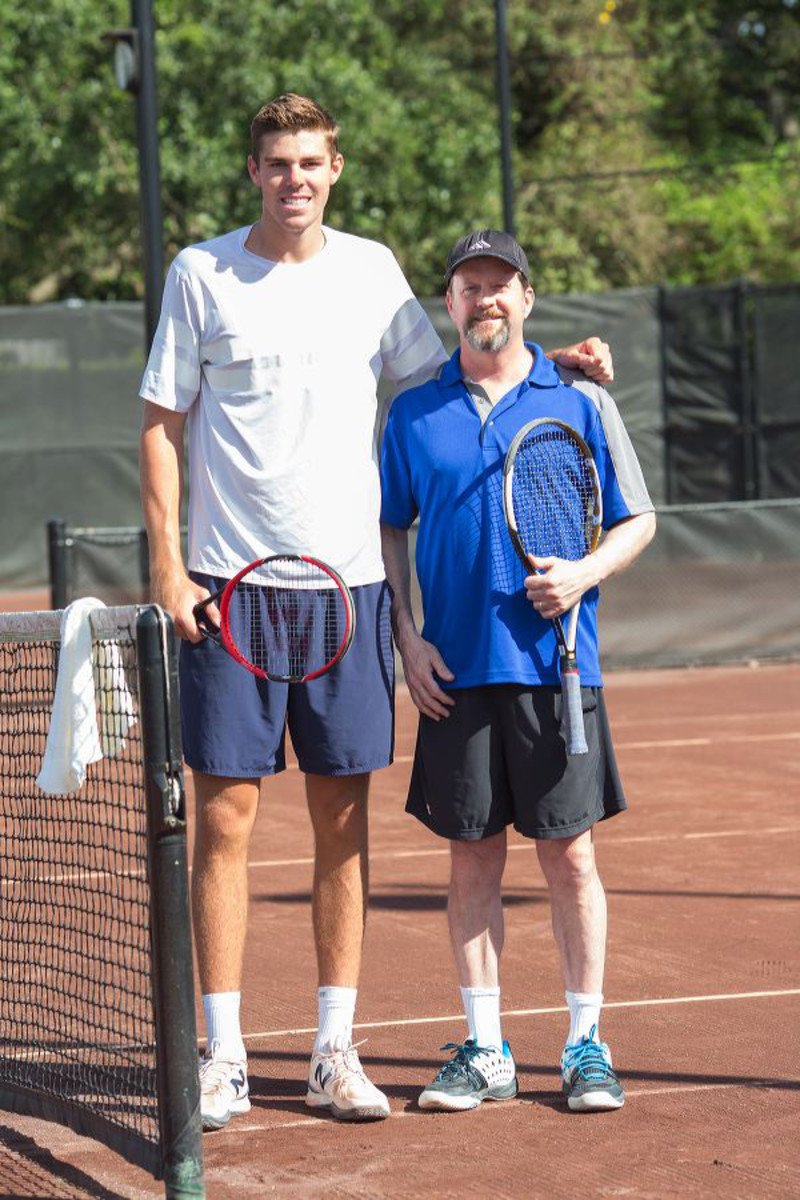
The speed of serves on tour is not an “official” statistic kept by the ATP and subject to speculation and doubt. “The technology and calibrations are different all over the world,” says Joshua Rey, media information manager for the ATP World Tour. “There are no consistent trackings.”
Mailbag: Why Federer is like the Golden State Warriors right now
The records for the fastest serves also vary. The frequently cited fastest serve ever is one by Australian Sam Groth who hit a serve 163 mph in a 2012 Challenger tournament, but many are highly suspicious of that reading. The fastest recorded serves on tour level play all occurred during Davis Cup matches: 157 by Isner this year; 156 by Ivo Karlovic in 2011; and 155 by Andy Roddick in 2004. The fastest on record at an ATP event all-time is 152 by Roddick at the 2004 U.S. Open.
Earlier this year Nicholas Mahut was recorded hitting a serve of 152.9 in Sydney, but the reading was later retracted from the ATP record list. “Every once in a while there is a radio interference that can lead to an extraneous reading,” says Levin of SMT, the company that handled the technology in Sydney. The second highest serve that Mahut hit was clocked at 124.
Individual tournaments, not the ATP, make the decision on what companies to hire for tracking the speed of serves. In Houston, at the far end of a narrow, windowless room with a door advertising racket stringers, two staff members from Flightscope Tennis, a company that measures speeds of serves at 80 tournaments around the world, sit beyond the stringing machines and monitor the radar readings with several laptops, monitors and computer servers.
The process is automated. Serves are measured by radar equipment that sits on each end of the court. In Houston, two boxes emitting the radar that catches the ball in flight are behind the banner tarps hung on each end. The radar wave goes through banner and captures the serve speed as close as possible to the moment it leaves the racket. The reading feeds through the computers and onto the digital signboard. Serves marked as a fault by the chair umpire are not recorded, although speed readings of the misses do pop up on the board that fans can see.
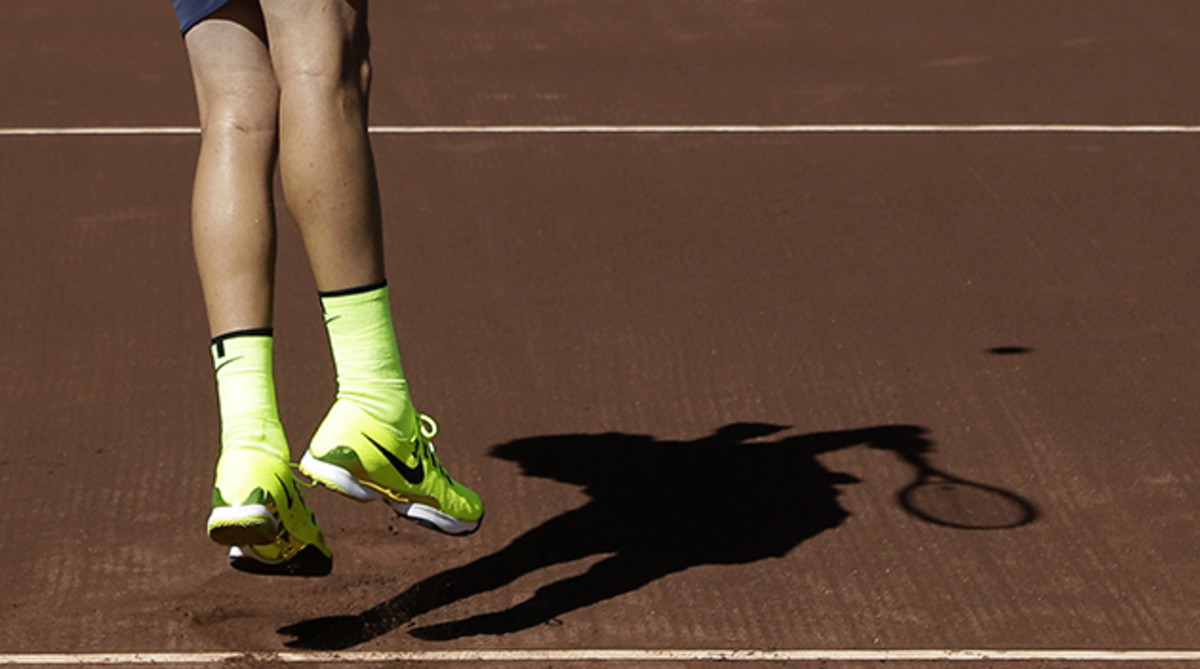
Jacek Gimlik, a senior electronic engineer, says Flightscope’s equipment has a margin of error of slightly more than one mile per hour. He says that there are no standard requirements for how the speed of serves is measured, and that not all companies use the radar equipment the same way. Tracking a ball traveling that fast and at varying angles and trajectory is not a perfect science. “It is very hard to measure,” he says.
Many other factors affect the speeds of serves, including the type of ball being used. “We basically use a different tennis ball at every tournament,” Querrey says. “This tournament, for example, we play with a woman’s U.S. Open ball. It’s much lighter than the normal ball.”
Querrey said Opelka’s serve speeds in Houston wouldn’t be as high in Indian Wells or Miami where a heavier ball is used on the hard courts as opposed to the lighter ball on clay. Querrey also said he has noticed discrepancies in readings at the various events, but it doesn’t bother him.
“If I hit a serve 130 or 138, and it’s an ace, it’s really no big deal,” he says.
As for speed calculation, he joked that he would strive for more entertainment marketing value if he was in charge. “If I was a tournament, I would juice it up so it gets the fans excited,” Querrey says. “180!”
****
Stuck under a dark cloud: Can tennis weather the scandal storm?
Returners aren’t the only ones who have to grapple with the fast-moving serves. I pity the poor line judges assigned the thankless job of determining precisely where these bullets land. However, Matthias Giese, 46, of Hamburg, Germany—one of the line judges calling serves in Houston—said being on the service line is easier than the other line judge positions. “You have only that one shot the whole rally,” says Giese, who began calling lines when he was 15. “If you are on the baseline or the long line, you have to stay focused and concentrate. But if you are on the serve, you know it’s coming.”
Giese, who works at tournaments about 20 to 25 weeks a year, including Indian Wells and Miami in 2016, says he goes through the same routine for all servers. “I look when he starts his motion and then my head goes straight to the line,” he says. “Most of the time I see it.”
****
After Isner went on to beat Chung 7-6 (5), 6-4 to reach the semis in Houston, I asked him who has the greatest serve in the history of tennis.
“I’ll put myself up there,” he says. “There are a lot of great servers going today. Karlovic, Raonic. Goran Ivanisevic had an unbelievable serve. Of course, Pete Sampras. His serve was so fluid and so perfect. Federer—he does everything well. His serve especially is very good…Andy Roddick’s serve is a howitzer as well.”
“Who’s the best you’ve had to return?”
“I guess Karlovic,” he says. “It comes down on a pretty steep angle like mine.”
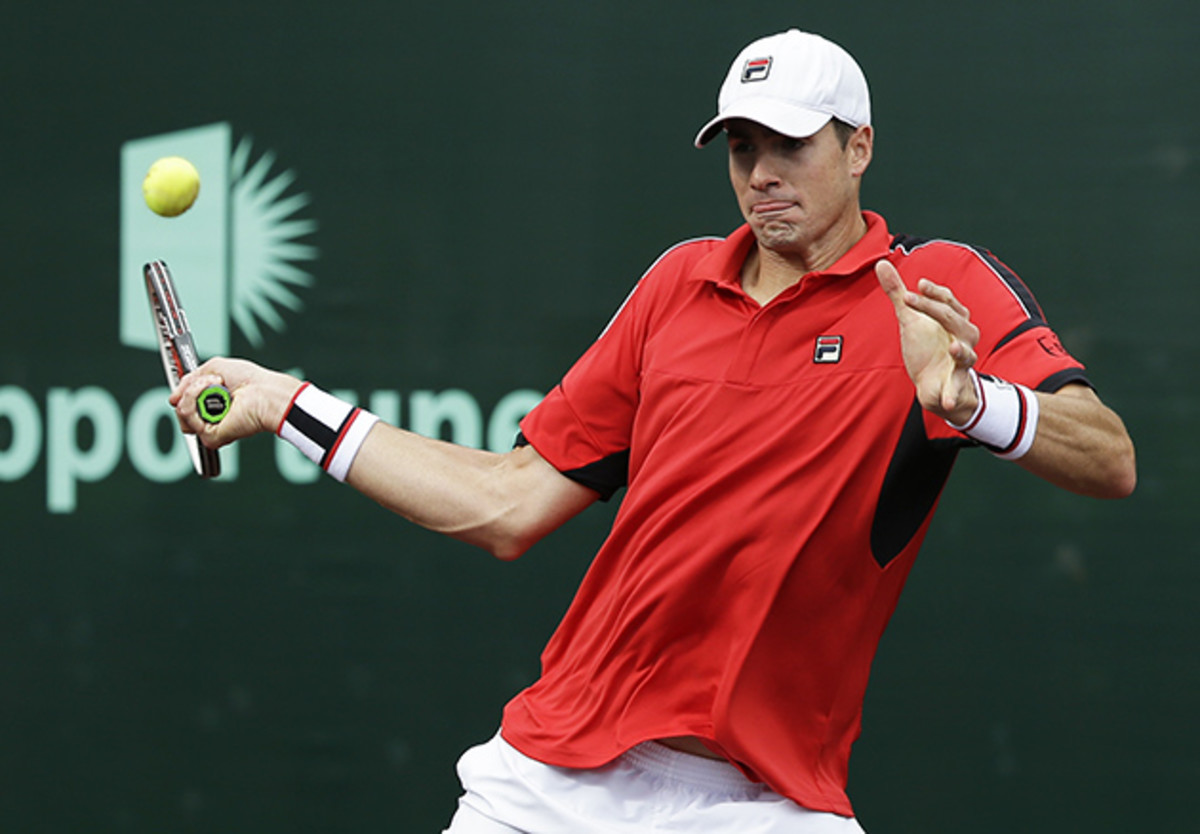
Like many discussions in tennis such as who was the greatest of all time, there is no scientific formula for the question regarding the best serve. I believe the reliable statistic of who has the most aces per match is the best benchmark.
That honor goes to Karlovic, who also has the most aces all-time with 10,505. He has averaged more than 19 aces per match over 545 career matches. (Ivanisevic, Karlovic’s Croatian compatriot, is the only other player to hit more than 10,000 career aces, although his match average was 13.9 in 754 matches. Federer is third with 9,576.)
Isner, who has averaged almost 17 aces over 459 matches, said he wasn’t aware that he has almost 8,000 aces over his nine years on tour. He said he has not thought about reaching the 10,000-ace mark or passing Karlovic. “He’s still playing,” he says. “Maybe it could happen, I’m younger than he is, but who knows.”
The SI Extra Newsletter Get the best of Sports Illustrated delivered right to your inbox
Subscribe
Isner hit 24 aces in his first match in Houston, but described the conditions against Chung in the quarters the next day as “a bit slower,” resulting in only 14 aces over eleven service games and a tiebreaker. By the end of the tournament in Houston, Isner hit 54 aces, 12 shy of the tournament record of 64 aces he set in 2013.
****
With the speed of serves escalating at the top and all through the drawsheets, the emphasis on returning has become even more important. A break or two of serve can seal a victory. Serves don’t win matches. Returns and making the fewest errors do. “The guy who is the number one player in the world is there because he’s consistent,” says sport analytics expert Levin.
That guy—Djokovic—holds not only a colossal lead in ranking points, but also sits far atop the return games won statistic for 2016. This year he has broken serve 38% of the time, seven percentage points higher than second place.
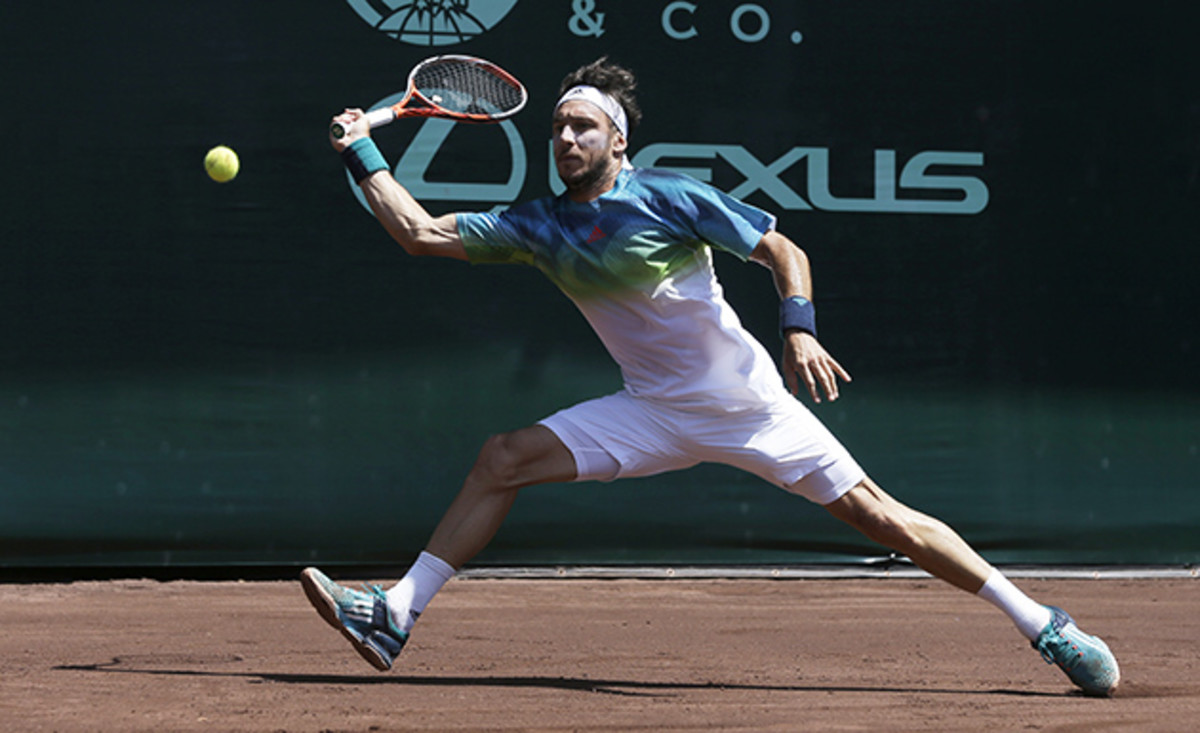
Ultimately, the winner of the Houston tournament, Juan Monaco, did not crack the top 10 of the highest speed serves for the week, but he did beat four big servers: Benoit Paire, Querrey, Feliciano Lopez (who ranks seventh on the all-time career ace list, ahead of Isner by only 40 aces), and Jack Sock.
What is Monaco’s strategy for returning the big blasts? “You just set up on one spot and you go to that side,” he said after beating Lopez. “Sometimes it’s lucky. Sometimes it’s experience. Sometimes you know the player, you know the opening where he’s going to serve. You have to be calm.
“And when you have the opportunity to break,” he says, smiling, “be ready.”
Joe Samuel Starnes is the author of Red Dirt: A Tennis Novel, published last year by Breakaway Books. Find him on Twitter @JsamuelStarnes or www.joesamuelstarnes.com.
